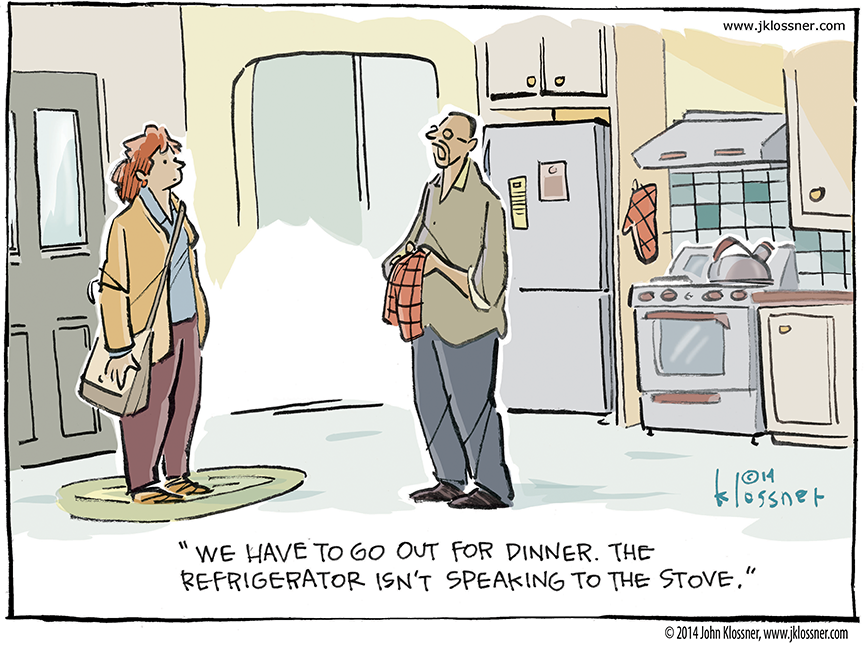
Gushing with potential, or our worst nightmare?
“If you think that the Internet has changed your life, think again. The Internet of Things is about to change it all over again!”
- Brendan O’Brien, chief architect/co-founder, Aria Systems
The Internet of Things, where everything from coffee makers, washing machines and jet engines to lamps, cars and heart monitors are connected via the Internet, is growing at an incredible pace. In fact, studies show that there will be more than 24 billion IoT devices worldwide by 2020, approximately four for every human being on the planet.
To heighten awareness of opportunities made available through IoT, YSU is partnering with the Youngstown Business Incubator and tech giant Cisco to create OH-IoT, a program that hopes to accelerate IoT applications across the greater Mahoning Valley.
In an effort to better understand the potential of IoT, as well as its vulnerabilities, YSU Magazine asked Jim Cossler, founding chief executive and now the Huntington Bank Entrepreneur in Residence at YBI, to share his insights.

By Jim Cossler
It seems you cannot pick up a business magazine today without stumbling upon an article gushing over the amazing potential that the Internet of Things is bringing – including new business efficiencies, ushering in new technological innovations in products, and seemingly just making all of our lives somehow ten times better than they are today.
OK…and maybe it will. IoT technology can certainly make all the aforementioned benefits a reality. Or, maybe it will be our worst nightmare, on so many different levels. But let’s first start by asking the question: What exactly is the Internet of Things?
The Internet part of the equation, I think, is well known, well used, and at least partially understood by almost everyone. After all, it has been around in some form since the 1980’s. Quite simply, the Internet is the global system of interconnected computer networks that use the TCP/IP protocol suite to link computing devices together, no matter where on the planet those devices are physically located.
So for decades now, we have been linking computing devices together with great success, producing absolutely amazing results. But then people began to ask, what if we began connecting “things” other than computer devices to the Internet? And with that question, the Internet of Things was born and set into motion.
So what kind of things are we connecting? Well, it could be an outpatient with a heart monitor implant that could, in real time, alert trained medical personnel to a serious medical change. It could be a farm animal with a biochip that alerts the rancher to changes in the health of the animal long before her trained eyes could detect it. It could be a $50 million gas turbine installed in a remote, desolate part of the world that needs real time monitoring by expert engineers physically located thousands of miles away. It could be the smart watch on your wrist, your car, your home, or even you. It can be anything that there is a business case for real time monitoring and real time manipulation.
But the connectivity of things, while bringing about amazing advances, also has a dangerous vulnerability that can easily be exploited. The vulnerability is the connection. So just like the way in which a computer device can be “hacked,” so can any connected thing as well. There are amazing advantages in connecting our cars to the Internet. Particularly when it comes to driver convenience, and more importantly, driver safety. But a connected car is also vulnerable. A recent demonstration of that was shown when hackers took control over a moving car’s steering, braking, acceleration, door locks, and even its music system, and there was not a single thing the driver could do to stop it. And then comes the issue of personal privacy. If our phones, our watches, our cars, our homes are being monitored in real time, do
we have any privacy left? More importantly, who is doing the monitoring, and what are they doing with all that data?
As stated at the very beginning, IoT has the potential of bringing about new business efficiencies, ushering in new technological innovations in products, and making all of our lives much better than they are today. But, first, we must address the issues of security and privacy for that to happen.

